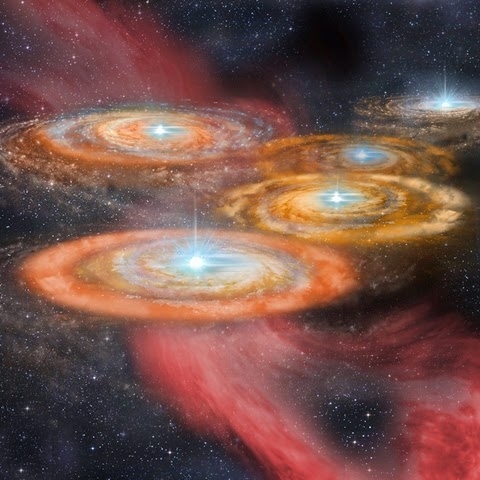| Online: | |
| Visits: | |
| Stories: |

| Story Views | |
| Now: | |
| Last Hour: | |
| Last 24 Hours: | |
| Total: | |
The First Stars
The first stars in the Universe were born several hundred million years after the Big Bang, ending a period known as the cosmological ‘dark ages’ – when atoms of hydrogen and helium had formed, but nothing shone in visible light.
In a small cluster of even 10 to 20 protostars, the ongoing bursts would mean the cluster would spend large periods with enhanced brightness. According to the simulation, every so often a cluster of 16 protostars could see its luminosity increase by a factor of up to 1000, to an extraordinary 100 million times the brightness of the Sun.
The earliest stars lived very short lives and produced the first heavy elements, like the carbon and oxygen that the chemistry of life depends upon.
Light from these stars has travelled towards us for almost 13 billion years, so to observers on Earth they look very faint and also have their light stretched out into infrared wavelengths by the expansion of the universe. This makes these stars very hard to observe, but the next generation James Webb Space Telescope (JWST) will survey the skies to look for them. Although the luminosity of an individual first star is probably too faint for JWST to spot it, the new work suggests that clusters of the first protostars could be prominent beacons in the early universe.
Dr Basu commented: “Seeing the very first stars is a key science goal for JWST and part of astronomers’ quest to track the history of the cosmos. If we’re right, then in just a few years’ time, we could see these enigmatic and dazzlingly bright objects as they came into being, and lit up the universe around them.”
Contacts and sources:
Dr Shantanu Basu
University of Western Ontario
Dr Robert Massey
Royal Astronomical Society




